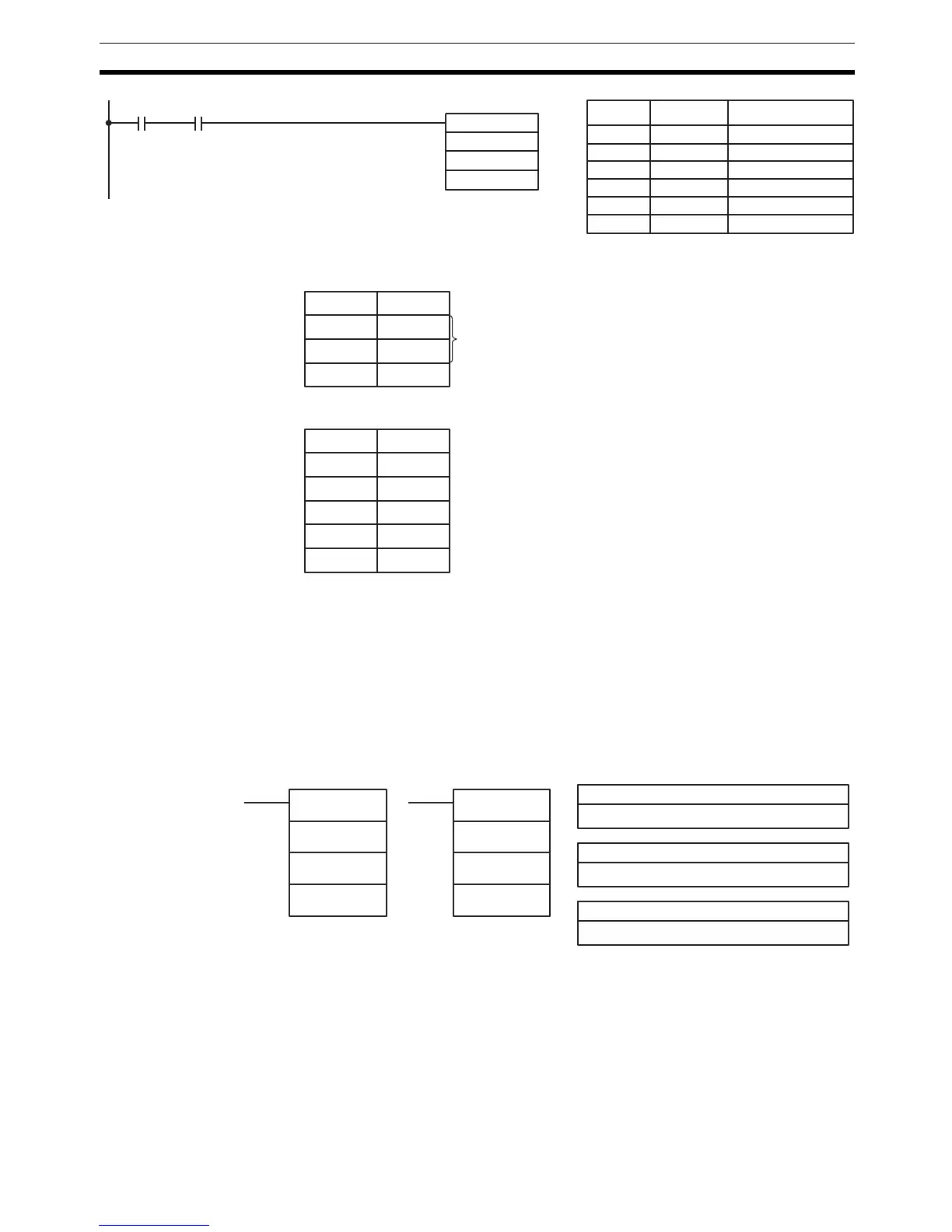415
Communications Instructions Section 5-30
Flags ER: Indirectly addressed EM/DM word is non-existent.
(Content of *EM/*DM word is not BCD, or the EM/DM area boundary
has been exceeded.)
5-30 Communications Instructions
5-30-1 RECEIVE – RXD(47)
Limitations D and D+(N÷2)–1 must be in the same data area.
DM 6144 to DM 6655 cannot be used for D or N.
N must be BCD from #0000 to #0256.
Description When the execution condition is OFF, RXD(47) is not executed. When the
execution condition is ON, RXD(47) reads N bytes of data received at the port
specified in the control word, and then writes that data in words D to
D+(N
÷2)–1. Up to 256 bytes of data can be read at one time.
If fewer than N bytes are received, the amount received will be read.
0018
0000C+2: DM 0302
15 0
@CMND(−−)
DM 0100
DM 0200
DM 0300
00000
Address Instruction Operands
00000 LD 00000
00001 AND AR 0209
00002 SEND(90)
DM 0100
DM 0200
DM 0300
AR 0209
0008
0300C+3: DM 0303
C+1: DM 0301
C: DM 0300
0003C+4: DM 0304
0064C+5: DM 0305
Bytes of command data: 0008 (8 decimal)
Bytes of response data: 0018 (24)
Transmit to the local network and the device itself
Node number 3, unit address 00 (CPU Unit)
Response requested, port number 0, 3 retries
Response monitoring time: 0064 hexadecimal (10 seconds)
8200
0A00S+2: DM 0102
15 0
0101
000AS+3: DM 0103
S+1: DM 0101
S: DM 0100
Command code: 0101 hexadecimal (MEMORY AREA READ)
Number of words to read = 0A hexadecimal (10 decimal)
DM 0010 (Data area = 82 hexadecimal, address = 000A00)
D: First destination word
IR, SR, AR, DM, EM, HR, TIM/CNT, LR
C: Control word
#
Ladder Symbols
Operand Data Areas
N: Number of bytes
IR, SR, AR, DM, EM, HR, TIM/CNT, LR, #
RXD(47)
D
C
N
@RXD(47)
D
C
N
